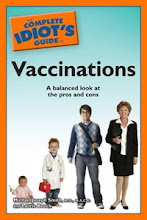I've been thinking about magnet injuries ever since I read a story about summer injuries in kids by a Washington Post columnist. Buckyballs, the magnetic toy marketed to office workers, have caused numerous injuries to children who got their hands on them and swallowed the small, pea-sized magnets. The magnets can clamp together across internal tissues, causing intestinal blockages.
These
injuries are not just limited to young children. Fox31 news in Denver reported that a thirteen-year-old girl put several Buckyballs on her tongue to pretend that she had pierced it,
swallowed them, and had to have emergency surgery
to remove them from her intestines.
Buckyballs' manufacturer, Maxfield and Oberton, clearly states on its website that Buckyballs are not children's toys and are dangerous to children. But childhood injuries from Buckyballs persist.
The CDC has also reported injuries and deaths in children who swallowed magnets dislodged from children's toys or embedded in small toys. In one of the cases in the CDC report, the magnet-embedded toy in question sounds suspiciously like Valtech Magna-Tiles, a current favorite toy in my own household.
In most magnet-injury stories, a child swallows magnets from a toy intended for, and owned by, an older child or adult family member. Who, then, is responsible for preventing these injuries?
When I buy a present for a friend's child, I try to find something that will be safe for any younger siblings in the household to use as well. I know how easily these toys can fall into younger hands (and how sneaky the younger siblings can be when they want to play with a toy not intended for them).
No matter how safe the environment, though, a child or a teen can get into trouble pretty quickly. And we can't supervise our children every moment of every day. It's better to to talk with children early and often about what behavior is safe and what is not, and when to tell an adult about unsafe behavior that they do or see. This, ideally, will help them avoid injuries and make better choices throughout their childhood.
Subscribe to:
Post Comments (Atom)




No comments:
Post a Comment